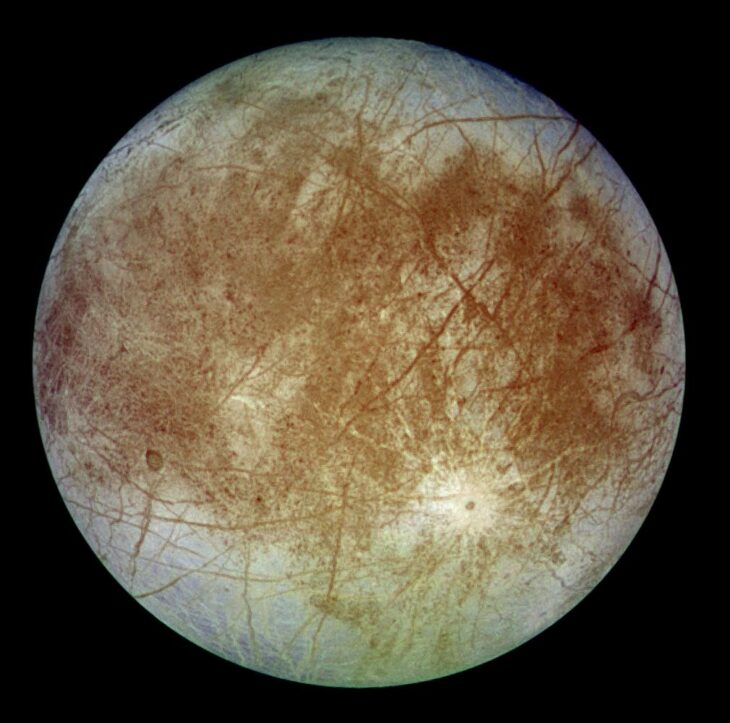The only example we have of life in the universe is Earth, a rocky planet with over 70% water on its surface. As far as we know, all life on Earth depends on water to survive and flourish, so scientists call other planets known to harbor liquid water “habitable.”
However, scientists also know that just a puddle of water is not enough to sustain life. Life relies on the constant flow of electrons between molecules, known as an electron gradient, to create energy. This way, electrons move from high-electron density locations, known as reducing, to low-density locations, known as oxidizing.
Scientists have found a few planets and moons in our Solar System that host liquid water. Researchers are particularly interested in Jupiter’s moon Europa because remote measurements show it has an icy layer about 10 kilometers (or 6 miles) thick on top of a salty liquid ocean about 100 kilometers (or 60 miles) deep overlying an iron-rich rocky crust.
Europa has no atmosphere to shield it from the Sun’s radiation, which causes chemical reactions that consume electrons on its surface, producing an oxidizing environment. In contrast, the iron-rich crust yields a reducing environment under its ocean. This means an electron gradient naturally forms along the path from Europa’s oxidizing surface to its reducing ocean floor. Scientists want to know if life could use this electron gradient to sustain itself and have enough energy to survive.
Researchers studying Europa with data from the Cassini and Galileo missions constrained its ocean temperature to between 0º to -13ºC, or 32º to 9ºF. They found the highest temperatures were closest to the ocean floor due to water-rock reactions that produce heat, like in hydrothermal systems on Earth. They also found that some of the most abundant molecules near the surface of Europa are all oxidizing molecules, like carbonates and sulfates.
A team of researchers from the University of Akron and the University of Southern California calculated how much energy is available for life in Europa’s ocean based on these temperature constraints, and the amount of energy supplied by the oxidizing molecules at Europa’s surface. They investigated whether 3 different types of Earth microorganisms could live under the Europan ocean. The microorganisms they tested use carbonate, sulfate, or iron particles to create energy. They reasoned that these 3 oxidizing molecules are all found in the icy surface of Europa, so if they were transported to the ocean bottom, organisms could combine them with reducing molecules from the seafloor to make energy.
The researchers calculated that under Europa’s conditions, the dissolved iron near the icy surface layer forms solid particles once it’s hit with penetrating radiation from the Sun, and slowly falls to the bottom of the ocean. It’s like snow falling from the sky on Earth, but this ocean rains reddish iron particles like rust instead of water ice particles.
The scientists calculated that the oxidizing iron snow provided a larger electron gradient than carbonate or sulfate, which ultimately creates more energy for life. They concluded that iron snow could feasibly fuel microbes producing up to 2.5×1026 cells per year at the bottom of Europa’s ocean – that’s about 0.1% of the total number of microbial cells living in Earth’s oceans today.
However, the authors cautioned that only about 10% of the total energy Earth organisms make is dedicated to producing their cells. The other 90% is spent in metabolic maintenance, so the number of cells microbes could actually produce from this iron pathway under Europa’s ocean would be much smaller than what they estimated.
Even so, the authors suggested that these cell number calculations could be used to design missions to look for life on Europa. When future satellites orbit Europa, researchers can estimate how much cellular mass to expect from any microorganisms living off the iron pathway at the bottom of Europa’s ocean.


